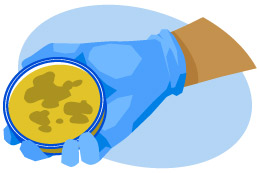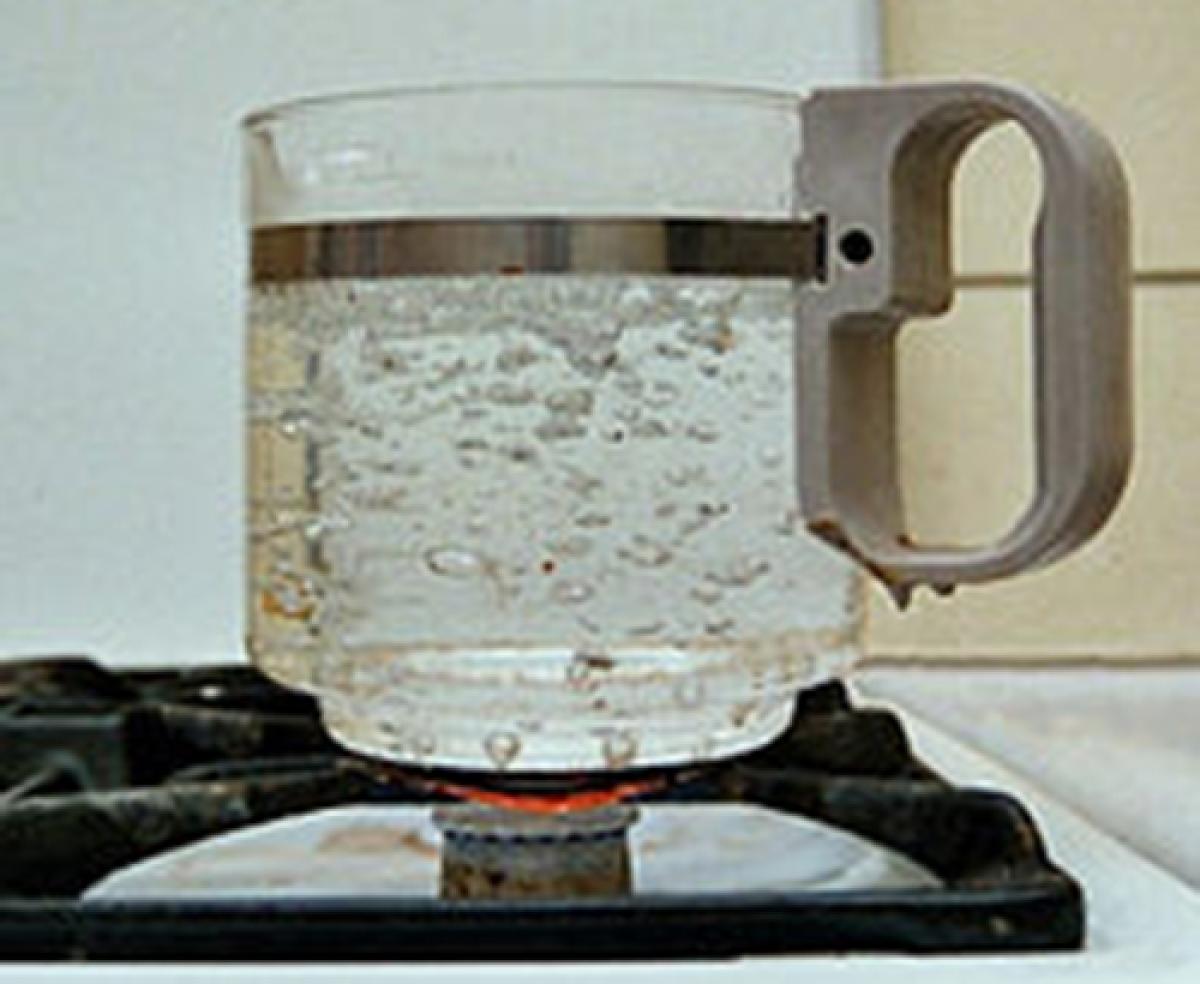Figuring out the "bad guys"
Many important discoveries in microbiology happened during the 1800s. Two major questions needed answers. First, did microbes just suddenly (spontaneously) appear in rotting material? Many scientists back then thought that microbes could grow in dead material without being produced by other microbes. If the microbes didn’t appear spontaneously, they would have to come from some other process.
The great French scientist Louis Pasteur found the answer. He showed that boiled water or any type of material in which all microbes were killed or removed (called sterilized) would remain clear of bacterial growth. This meant microbes did not spontaneously grow. However, sterilized fluid would only stay free of bacteria as long as bacteria carried in the air did not “infect” that fluid.
 The second question seems silly today. Scientists wanted to know whether microbes cause specific diseases. If they did, how could one be sure which microbe was responsible? Which bacteria were good and which were bad? Robert Koch was one of many who took on the task of answering this question. The German scientist developed a set of rules, or postulates. Koch’s rules help us tell the difference between actual disease-causing microbes and those that are harmless.
The second question seems silly today. Scientists wanted to know whether microbes cause specific diseases. If they did, how could one be sure which microbe was responsible? Which bacteria were good and which were bad? Robert Koch was one of many who took on the task of answering this question. The German scientist developed a set of rules, or postulates. Koch’s rules help us tell the difference between actual disease-causing microbes and those that are harmless.
Today, scientists still use Koch’s postulates. For a microbe to be considered a disease-causing agent, Koch’s rules state the following:
The microbe must be regularly found in the diseased tissue (like in the wounds caused by certain diseases).
- The microbe must be able to be grown alone (called cultured), without other bacteria. (Keeping unwanted microbes out is important to this process.)
- If you introduce the microbe culture into an organism that could carry the disease, it should cause the disease.
- The same microbe should be found once again in the diseased tissue of the new host.
Koch used his own postulates to learn about anthrax, a life-threatening disease. He showed that anthrax in cattle was caused by a bacterium. Scientists began classifying all kinds of bacteria and the diseases they caused by using Koch’s ideas.
Additional images from Wikimedia via Markus Schweiss (boiling water).
Read more about: Microbes
Bibliographic details:
- Article: Identifying Bad Bacteria
- Author(s): Dr. Biology
- Publisher: Arizona State University School of Life Sciences Ask A Biologist
- Site name: ASU - Ask A Biologist
- Date published: 9 Jul, 2014
- Date accessed:
- Link: https://askabiologist.asu.edu/identifying-bad-bacteria
APA Style
Dr. Biology. (Wed, 07/09/2014 - 09:39). Identifying Bad Bacteria. ASU - Ask A Biologist. Retrieved from https://askabiologist.asu.edu/identifying-bad-bacteria
Chicago Manual of Style
Dr. Biology. "Identifying Bad Bacteria". ASU - Ask A Biologist. 09 Jul 2014. https://askabiologist.asu.edu/identifying-bad-bacteria
Dr. Biology. "Identifying Bad Bacteria". ASU - Ask A Biologist. 09 Jul 2014. ASU - Ask A Biologist, Web. https://askabiologist.asu.edu/identifying-bad-bacteria
MLA 2017 Style

Be Part of
Ask A Biologist
By volunteering, or simply sending us feedback on the site. Scientists, teachers, writers, illustrators, and translators are all important to the program. If you are interested in helping with the website we have a Volunteers page to get the process started.

